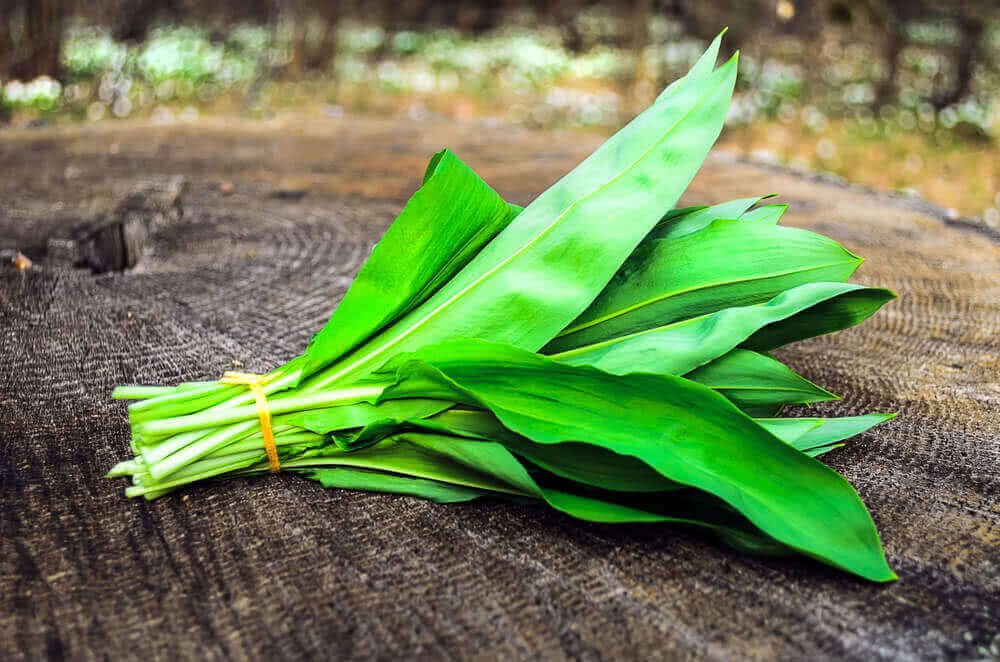Vegetables that grow naturally without any cultivation or care are called wild vegetables. These plants mainly grow in forests, wilderness, edges of farmlands, and barren fields. In the early days of the monsoon season, these vegetables are available for consumption. Along with being vegetables, a majority of them are also medicinal plants.
Most of the popular wild Indian vegetables that we know of are also recent introductions in our kitchens. Indians have been eating wild vegetables for thousands of years, but unfortunately, we seem to have lost the track of them somewhere, at the dawn of modern times. Tribals and rural Indians still learn and understand the true value of these wild vegetables. An interesting fact is that some wild vegetables have a dedicated cult following in urban areas & big cities where they are sold in special markets.
• Wild Monsoon Vegetables in India
1. Bharangi (Rotheca serrata)

Plant part cooked as a vegetable: Tender leaves.
Native to India, Sri Lanka, and Malaysia, this wild monsoon vegetable is also called the Blue-flowered Glory Tree. Called Bharangi in Hindi and Marathi, this plant has culinary uses as well as medicinal ones, being used as a treatment for snake bite wounds. Often, people grow these vegetables in monsoon for the best yield.
2. Dinda (Leea indica)

Plant part cooked as a vegetable: tender shoots
Growing abundantly in the Western Ghats of India, the Leea indica is a low-growing shrub that often finds uses in Indian homes as a culinary delight. Additionally, stems of vegetables of Dinda are often used in post-funeral rites in India.
3. Safed Musli (Chlorophytum tuberosum)
Plant part cooked as a vegetable: Leaves
Often called just Musli, this wild Indian vegetable hails from parts of India and Africa. In addition to being used as a vegetable in Indian homes, this plant has also been known to be Ayurvedically significant.
4. Takla (Cassia tora)

Plant part cooked as a vegetable: Tender leaves
With small, bold looking berry-like fruits, this wild monsoon vegetable is perfect for Indian climates. It grows best in Madhya Pradesh and Uttar Pradesh, and is also valued for its many medicinal benefits. This wild Indian vegetable is often said to benefit the liver, kidney, and large intestine.
5. Kurdu (Celosia argentea)

Plant part cooked as a vegetable: Tender leaves
Also known as the Silver Cock's Comb, this wild monsoon vegetable traces its roots back to India and Nepal. This plant is often known to be a troublesome weed but the leaves find great uses in the kitchens of Indians everywhere!
6. Bamboo (Dendrocalamus strictus)

Plant part cooked as vegetable or pickled: Tender bamboo shoots
Also called the Calcutta Bamboo, this plant has historically been used to create rafts, homes, walls, and scaffoldings. However, the tender shoots of this plant also find uses in many kitchens in the traditional way!
7. Shevala (Amorphophallus commutatus)

Plant part cooked as a vegetable: Inflorescence (tender flowering stalks).
This short-lived vegetable is considered a much-beloved delicacy in Thane & Palghar districts of Maharashtra.
8. Kartoli (Momordica dioica)

Plant part cooked as a vegetable: Young green fruits
Also known as Bristly Balsam Pear, the Kartoli vegetable plant is a commonly seen wild Indian vegetable. It boasts small yellow flowers and prickly green fruits that are used in various Indian preparations.
9. Kawla (Smithia hirsuta)

Plant part cooked as a vegetable: Tender leaves
This tender, erect-growing herb boasts a wonderful ornamental flower. This wild garden vegetable is known for its culinary and medicinal uses throughout the country.
10. Korla (Bauhinia malabarica)

Plant part cooked as a vegetable: Tender leaves
Often found in various countries across Asia, the Korla vegetable plant is known for its diverse and versatile culinary uses. These plants are also known as "Dwarf Orchids" and don't grow more than 3 meters tall.
11. Kuda (Holarrhena pubescens)

Plant part cooked as a vegetable: Tender fruits (pods)
Native to parts of India, Africa, and China, the Kuda is the wild vegetable that is loved by many for its versatile taste. This flowering plant has also been used in Ayurvedic medicine for many years.
12. Wild arvi/ Raan Aalu (Colocasia esculenta)

Plant part cooked as a vegetable: Leaves
Also called Taro, this a popular plant worldwide. Its leaves are traditionally used for cooking in Indian households while the root is also a popular dish in our cuisine. Additionally, this plant also gives a flavor from its extract that has gained worldwide popularity.
Apart from these, there are are hundreds of more wild Indian vegetables with different common names, cherished all over India by locals. All of these monsoon vegetables are cooked in various desi styles by using local spices and ingredients, and they are delicious!
Buy Vegetable Seeds










